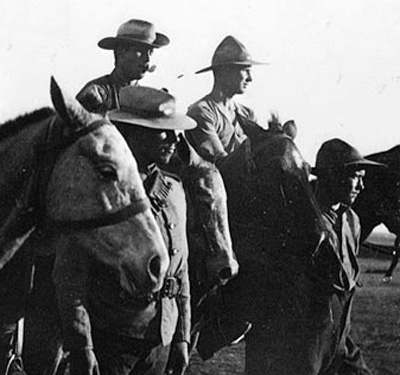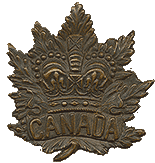Uniforms & Equipment
The Stetson Hat

During the South African War, apart from the 2nd (Special Service) Battalion, Royal Canadian Regiment of Infantry, all Canadian units that served in South Africa wore Stetsons. The hat became firmly identified with Canada and the Canadian military presence in South Africa.
Ironically, the hat was a product of the John B. Stetson Company, one of the more successful nineteenth-century American headwear manufacturers. Made of tan felt, with a large flat brim, and an oval cylindrical crown with indentations, it became very popular amongst cattle drivers of the western plains. Its trade names of "Boss of the Plains " and "Pony Hat " reflected its largely cowboy clientèle, and it is listed on inventories of stores of Canadian units headed for South Africa as "Hat, Cowboy." Stetsons had been worn unofficially by members of the North-West Mounted Police (NWMP) since 1895, an increasing number of whom preferred it to the standard-issue white pith helmet. Its adoption for use by Canadian units in South Africa was probably due to the fact that many members of Canada's second contingent were former members of the NWMP.
When issued, the hat was provided with a silk, grosgrain ribbon hatband, and a leather lace. An optional leather, buckled hatband was available that could be worn over the ribbon. Many men also made their own customized versions from belts and straps. Tooled leather bands were also common.
The legacy of the Stetson's use in South Africa was its adoption as the official headwear of the NWMP in 1903. It had also been taken into use by the South African Constabulary. Formed by Lieutenant-Colonel Robert-Baden Powell in 1900, the South African Constabulary was a British military unit that included over 1,200 Canadians among its personnel. Baden-Powell, who had seen members of the Royal Canadian Field Artillery wearing Stetsons at the relief of Mafeking, ordered 10,000 directly from the American company to outfit his constabulary. This was also the style of hat that he approved for his Boy Scout movement in 1907. Its continuing popularity is attested to by its recent adoption by the Ontario Provincial Police.
